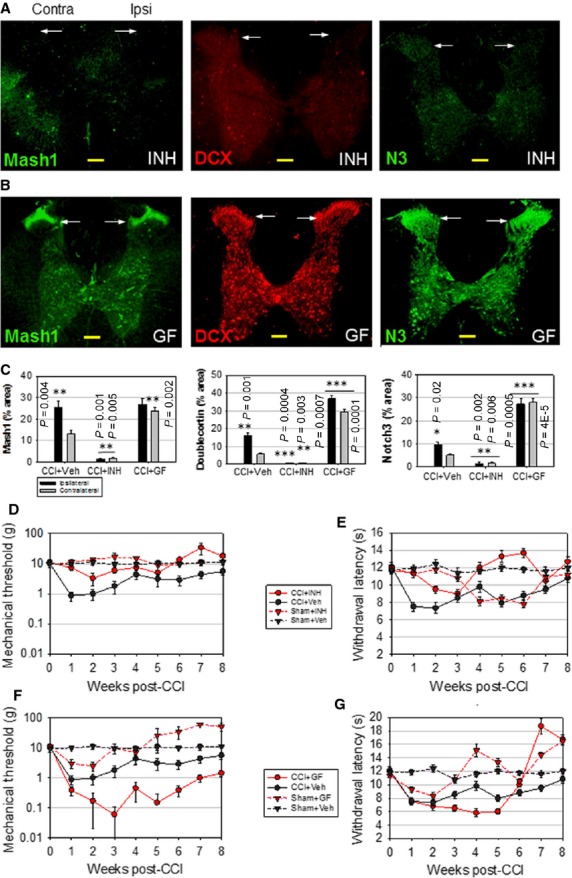Figure 5.

EGF/FGF2-dependent modulation of spinal cord neurogenesis corresponds to long-term changes in nociceptive sensitivity. (A) Immunofluorescence analysis of adult rat spinal cord, showing that inhibition of EGF/FGF2 signalling (INH) prevents the expression of neurogenesis markers Mash1, DCX and Notch3 (N3) in laminae I–II (arrows) 4 weeks post-CCI (compare to Fig. 1C). (B) FGF2+EGF treatment (GF) amplifies CCI-induced Mash1, DCX and Notch3 expression bilaterally, week 4 post-CCI. (C) Quantification of Mash1, DCX and Notch3 expression in the ipsilateral and contralateral halves of the spinal cord grey matter, in the presence of vehicle (Veh), INH or GF, week 4 post-CCI. Data shown as mean ± SEM, n = 5. Statistically significant differences shown for Vehcontra versus Vehipsi, and between INH or GF treatments versus Veh, for corresponding ipsilateral and contralateral sides (two-tailed t-test). (D and E) Inhibition of neurogenesis correlates with decreased nociceptive sensitivity. INH eliminates late-phase allodynia (D) and hyperalgesia (E) relative to vehicle (CCI+INH versus CCI+Veh). (F and G) GF enhances mechanical allodynia (F) and heat hyperalgesia (G) relative to vehicle (CCI+GF versus CCI+Veh). Data shown as mean ± SEM, n = 8; scale bars: 200 μm.
